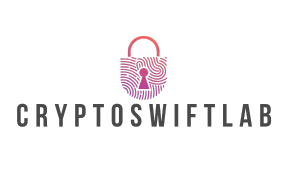Table of Contents
ToggleIn the ever-evolving world of software, the SaaS revenue model stands out like a superhero in a crowd of ordinary caped crusaders. With its subscription-based charm, it’s not just a trend; it’s a game-changer that keeps businesses thriving while users enjoy seamless access to their favorite tools. Imagine paying for your favorite streaming service, but instead of binge-watching shows, you’re binge-using software that makes your life easier.
Overview of SaaS Revenue Model
SaaS revenue models primarily rely on subscription fees for software access. Businesses often offer various subscription tiers that cater to different customer needs. Recurring revenue proves crucial, providing steady cash flow that assists in forecasting growth.
Flexibility characterizes SaaS offerings, as customers typically can scale their subscriptions easily. Users may opt for monthly or annual payments, based on their preferences. Many companies introduce free trials, enabling potential clients to explore features before committing.
Per-user or per-feature pricing structures frequently enhance the SaaS model. Some services allow organizations to pay solely for the users or features they need. This customization drives customer satisfaction and retention, as businesses can align expenses with their resource allocation.
Data security and compliance also significantly impact the SaaS landscape. Companies often highlight adherence to regulations like GDPR and HIPAA to instill trust among users. Commitment to high security standards can differentiate one SaaS provider from another, creating a competitive advantage.
Value-added services, such as premium customer support or integration capabilities, further enrich the SaaS offering. Offering these services provides additional revenue streams while enhancing overall user experience. Market research indicates that companies adopting these strategies often see higher retention rates among subscribers.
Ultimately, the SaaS revenue model aligns with modern consumer expectations for accessible, scalable, and secure solutions. Transitioning from traditional software purchases to this model reflects changes in market dynamics and user preferences. Adapting to these trends positions businesses for sustained success in a rapidly evolving technology environment.
Types of SaaS Revenue Models
The SaaS industry features several revenue models. Each model serves distinct customer needs while ensuring companies generate sustainable income.
Subscription-Based Revenue Model
Subscription-based models dominate the SaaS landscape. Customers pay a recurring fee, usually monthly or annually, granting them continuous access to the software. This approach fosters steady cash flow, allowing businesses to predict revenue trends. Variations exist, with tiered pricing structures accommodating different user requirements. Companies often provide options for $10 to $300 monthly fees, depending on features or the number of users. The subscription model’s flexibility helps retain customers while enabling easy adjustments as businesses grow.
Usage-Based Revenue Model
Usage-based revenue models charge customers according to their software consumption. This model appeals to those with varying needs, as users only pay for what they use. Examples include companies charging based on data storage or API calls. With this approach, both large enterprises and small businesses find it attractive for aligning costs with actual usage. Often, this model ensures that companies attract new clients who may fear upfront investments. Customers engaged in seasonal activities benefit by paying only during peak usage periods.
Freemium Revenue Model
Freemium revenue models attract users by offering basic features at no charge. This strategy allows businesses to showcase their software’s value before triggering any payment. Many companies adopt this model to build a large user base quickly. Premium features, which enhance functionality, typically require a subscription. Users often convert to paid plans, spurred by valuable add-ons and superior support services. For instance, software might initially provide limited storage, enticing customers to upgrade for more capacity as their needs expand.
Benefits of SaaS Revenue Model
SaaS revenue models offer numerous advantages that contribute to business success.
Predictable Revenue Streams
Predictable revenue streams emerge from subscription fees that generate a consistent cash flow. Businesses can forecast their financial performance accurately by relying on recurring payments. This allows for better budgeting and resource allocation. Customers value the flexibility to choose different subscription tiers that fit their needs, leading to increased retention rates. Users enjoy the assurance of access to updated software without additional costs, enhancing their overall experience with the service.
Lower Customer Acquisition Costs
Lower customer acquisition costs result from the subscription-based nature of SaaS. Efficient marketing strategies, such as offering free trials and freemium versions, attract users and encourage conversions. Customers often share positive experiences, leading to word-of-mouth referrals that further reduce costs. Targeting specific niches becomes easier with tailored subscription options that resonate with diverse audiences. Retaining existing customers becomes less costly compared to acquiring new ones, creating a sustainable growth model for businesses.
Challenges of SaaS Revenue Model
SaaS revenue models face several challenges that can impact growth and sustainability for businesses. Recognizing these issues enhances strategic planning and ensures better positioning in the market.
Customer Retention Issues
Customer retention poses significant challenges for SaaS companies. Many users switch to competitors after initial engagement, seeking better features or lower prices. Failing to provide continuous value can lead to high churn rates, which affect long-term profitability. It’s essential for SaaS providers to maintain regular communication. Regular updates and feature enhancements play a crucial role in retaining subscribers. Implementing customer feedback mechanisms can also enhance user satisfaction and loyalty, addressing concerns before they escalate.
Competition and Market Saturation
Competition within the SaaS market intensifies as more companies emerge. Numerous providers offer similar solutions, leading to saturation in certain segments. This saturation challenges differentiation, making it hard for businesses to stand out. Effective marketing strategies become crucial in helping SaaS companies convey unique selling points. Clear branding and targeted messaging can illustrate distinct advantages over competitors. Pricing wars often ensue, forcing companies to balance profitability with affordability, which complicates revenue generation. Leveraging customer testimonials and case studies can effectively showcase benefits and build trust.
Future Trends in SaaS Revenue Model
Emerging trends in the SaaS revenue model shape the future landscape for software providers. Notably, the integration of AI technology stands out, transforming customer experiences and operational efficiency.
The Rise of AI in SaaS
AI’s implementation enhances service personalization in SaaS applications. Tools analyze user behavior, enabling companies to tailor their offerings precisely to individual needs. Automation reduces churn by predicting customer trends and assisting in responsive support. Cost efficiency improves as AI streamlines processes, further enhancing profit margins. Companies adopting AI gain competitive advantages, leading to increased customer satisfaction and loyalty.
Integration with Other Business Models
SaaS companies increasingly blend their offerings with different business models. The combination with e-commerce platforms is significant, enabling seamless transaction experiences for users. Collaborating with consultative services deepens customer relationships, creating added value. Partnerships with cloud providers enhance scalability and reliability, which are key for consumer trust. Subscription packages now often include hybrid options, providing flexibility and accommodating various customer preferences.
The SaaS revenue model is reshaping how businesses approach software delivery and customer engagement. Its subscription-based framework not only ensures consistent revenue but also caters to the diverse needs of users. By offering flexibility and scalability, SaaS companies can enhance customer satisfaction and retention.
As the landscape evolves, embracing trends like AI integration and hybrid offerings will be crucial for staying competitive. Companies that prioritize customer relationships and adapt to market changes will thrive in this dynamic environment. The future of SaaS promises continued innovation and growth, making it an essential strategy for modern businesses.







